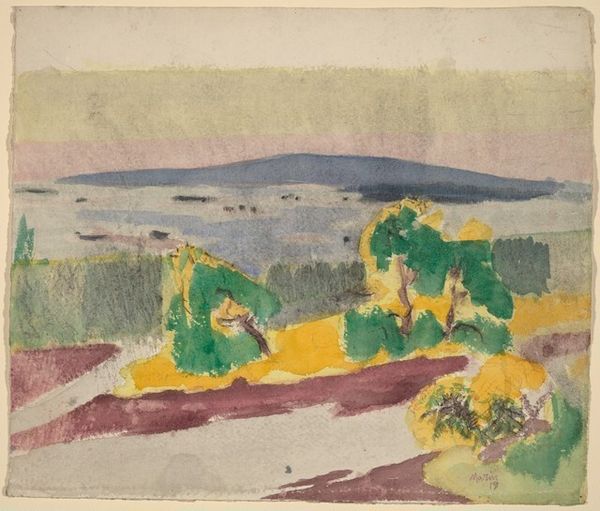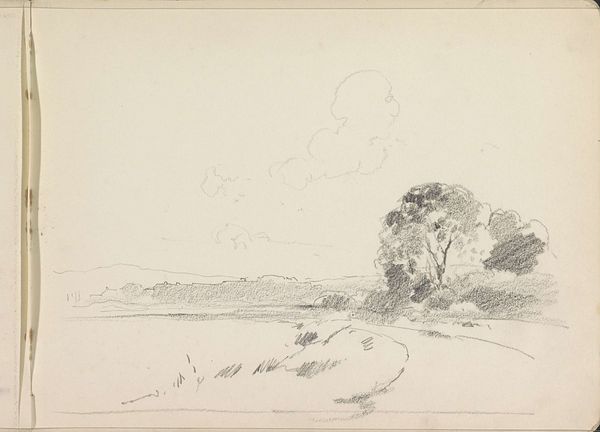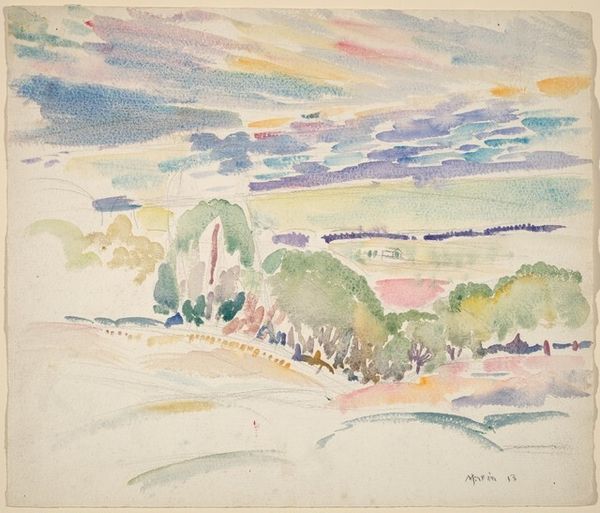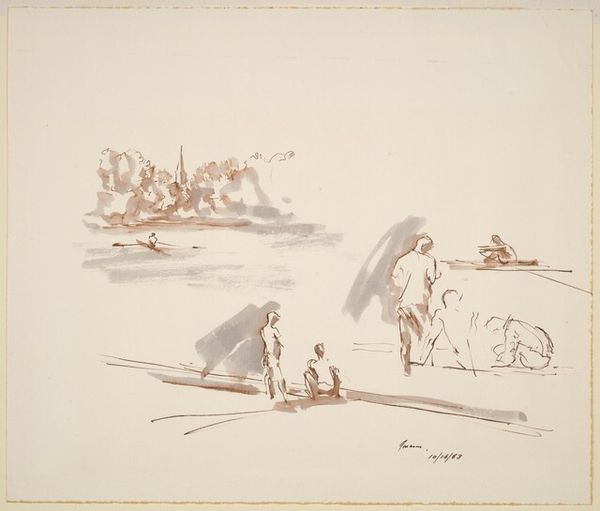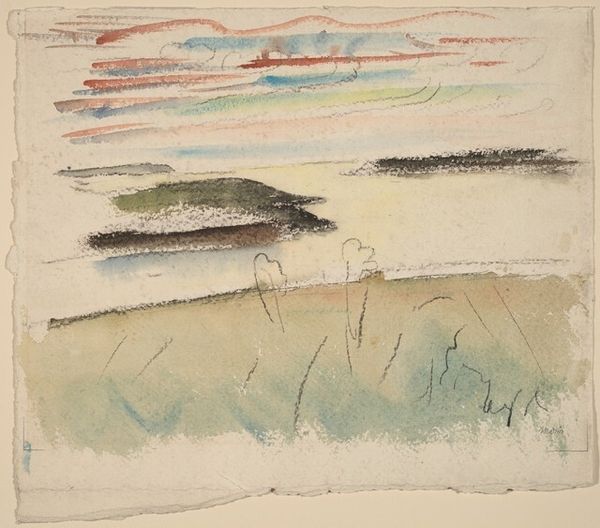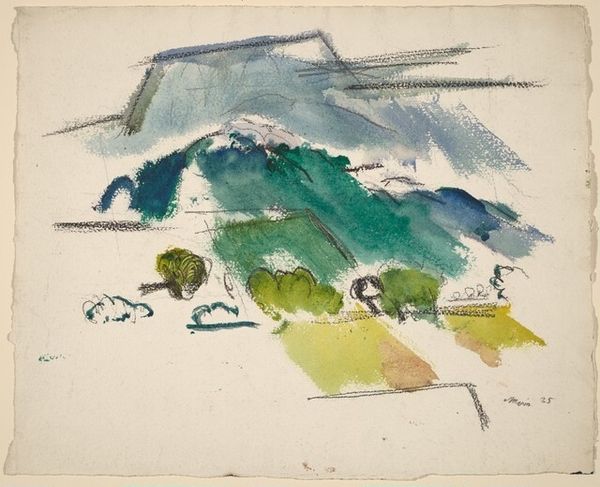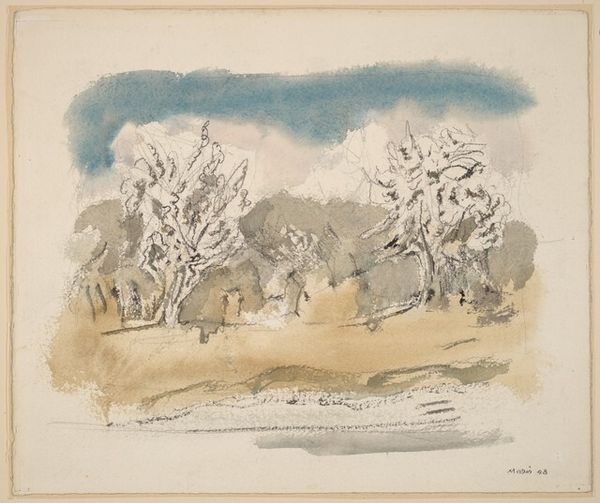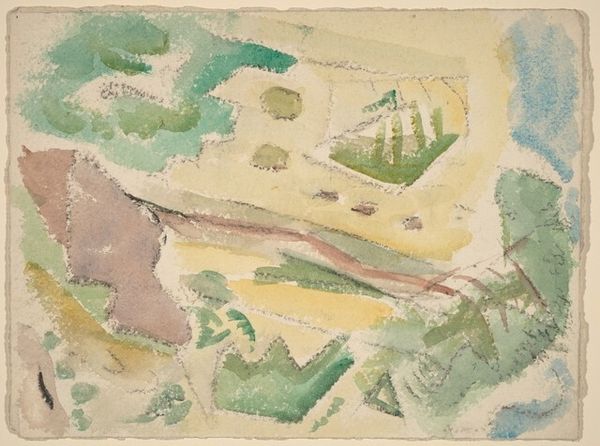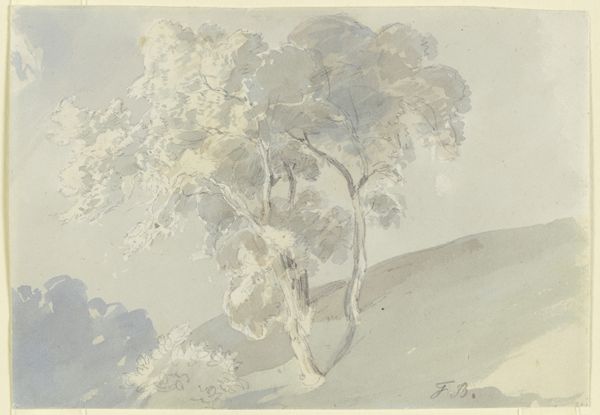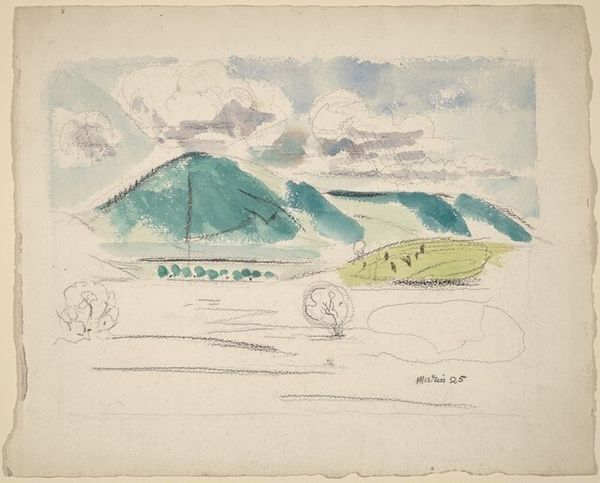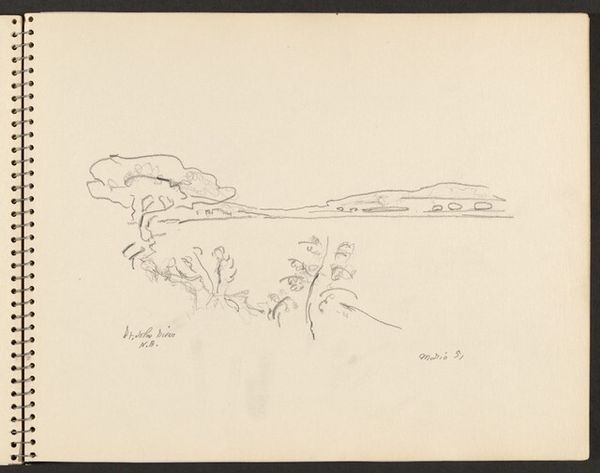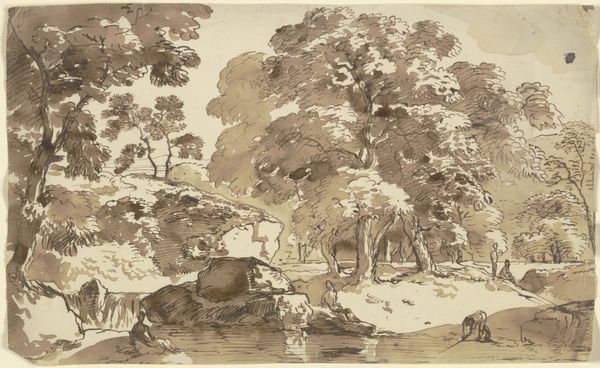
Dimensions: overall: 42.8 x 51.1 cm (16 7/8 x 20 1/8 in.)
Copyright: National Gallery of Art: CC0 1.0
John Marin created "End of Andrew's Island, Maine," a watercolor, around 1923. Marin was one of the first American modernists to embrace abstraction, capturing the energy of the American scene. The image is seemingly straightforward: a spit of land, some wind-blown trees, the sea, and a boat. But Marin wasn't interested in a photographic representation of the scene. It's a subjective impression influenced by European avant-garde movements, particularly Italian Futurism, which celebrated speed, technology, and dynamism. This was the period of rapid industrial expansion in the US, and the rise of urban centers like New York. Maine, with its rugged coastline and maritime traditions, offered Marin a different kind of energy, more elemental and natural. Historians look to the cultural context to understand such works. Records of Marin's engagement with the New York art scene and his relationship with gallerist Alfred Stieglitz help us understand the forces that shaped his vision.
Comments
No comments
Be the first to comment and join the conversation on the ultimate creative platform.

